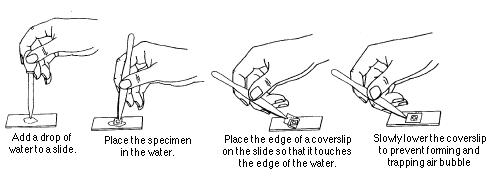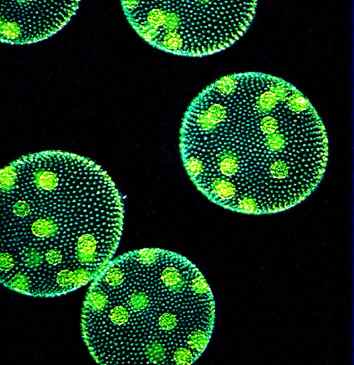Competition: is how organisms react to one another when they are trying to use the same resources. There are three different types of competition.Intraspecific which is between the same species. Interspecific which is between different species. Last, there is direct competition where one organism is declared the winner.
An example of competition would be two male deer competing against one another for the same mate.
Predation: There is a predator, the hunter, and the prey, the organism that is being hunted. Predation helps to prevent over population. An example of predation would be sharks hunting and feeding on seals.
http://team71.wikispaces.com/file/view/shark191106_468x397.jpg/52773934/317x238/shark191106_468x397.jpg
Herbivory: Organisms that feed on plants,which are primary consumers meaning they producer their own food.
An example of herbivory is this daintree caterpillar feeding on some leaves attached to a tree.
http://www.vuw.ac.nz/staff/angela_moles/daintreecaterpillar.JPG
Mutualism: The relationship between organisms where both organisms are helped or benefit from it. An example of mutualism is monkeys because the monkey eats the small bugs and organisms it finds in the other monkeys fur. Also, the monkey being picked over is clean.
Parasitism: The relationship between organisms where only one organism benefits at the other organisms expense. An example of parasitism would be the tiny organisms living off of this caterpillar.
http://www.cals.ncsu.edu/course/ent525/close/parasitism.jpg
Commensalism: The relationship between organisms where only one organism benefits and the other isn't bothered. An example of commensalism would be this porcelain crab that lives in soft coral. The crab is provided with shelter and the coral is not hurt in any way.
http://nadlembehresort.files.wordpress.com/2012/09/mg_5901.jpg
Motile: Organisms that are able to move around.
Sessile: Organisms that are stationary.
Producer: Organisms that make their own food in order to obtain energy.
Consumer: Organisms that eat other animals in order to obtain energy.
Autotroph: Organisms that produce their own food by using solar and chemical energy.
Heterotroph: Organisms that acquire energy from other organisms.
Materials: A microscope, a slide, pond water, a cover slip and a dropper.
Procedure: Set up a slide containing pond water and observe the organisms it contains under a microscope. Then determine the name and if the organism is sessile, motile, a producer, a consumer and whether it is autotrophic or heterotrophic.
Questions:
1. What might the role of a microorganism be in a freshwater community? The role of microorganisms in a freshwater community would be that the organisms feed off the dead and decaying plants and animals. They help to filter the water. Also, the organisms act as a food source for other animals living in or around the water.
2. Describe the process of preparing a wet mount.
3. Differentiate between microorganism and micro-community.
A microorganism is any organism that is to small to be seen by the unaided eye such as bacteria, protozoa, some fungi and algae. A micro-community is a group of microorganisms living together in one area that effect an environment.
Organism #1 Volvox: It is a motile organism and a producer. Since it is a producer, it can also be classified as an autotroph.
Organism #2 Euglena: It is a motile organism that uses it's flagella, "tail", to move. They contain chlorophyll which they uses to produce its own food through photosynthesis. Since it produces it's own food it is called an autotroph.
Organism #3 Paramecium: It is a motile organism. Paramecium is a consumer and a heterotroph, that has to obtain energy from other organisms.
Organism #4 Anabaena: This organism is photosynthetic, classifying it as a producer and an autotroph. It is also sessile, or stationary, which explains why it has to produce it's own food.
Organism #5 Zygnema: This is a sessile, or stationary organism. It uses photosynthesis to make it's own food. It can therefore be classified as a producer and an autotroph.
Organism #6 Amoeba: This is a motile organism. Amoeba is a producer and an autotroph.
Question: What organisms does an owl pellet contain?
Hypothesis: If an owl pellet is regurgitation then it will contain at least one organism.
Prior Knowledge: I knew that owls ate small rodents and birds. I also knew that owl pellets are the owls regurgitation. I learned that eagles and hawks also create pellets because they swallow their prey whole or tear them apart. Owls regurgitate around every 20 hours, which is something that I also learned.
Protocol: 1. Go pick out an owl pellet.
2. Measure the length and width of the owl pellet.
3. Observe the outside of the pellet.
4. Use the tools provided to break apart the pellet and make observations.
5. Organize all the bones that were found. Then, use your chart to label the type of bones.
Materials: Owl Pellets, dissecting needles, paper towels and the bone chart you were given.
Data: In our owl pellet, we found 1 rodent skull, jaw, and vertebrae. We found 2 rodent forelimbs, 2 hind limbs and 2 pelvic bones. We also found 8 rodent rib bones.
Results: From this information, we were able to conclude that our owl had only eaten and regurgitated 1 rodent.
Analysis:
Discussion/Interpretation: Through this experiment, we learned that owl pellets can contain a variety of different organisms that they have consumed. I also learned that many other birds such as hawks, eagles, and seagulls also regurgitate their food in pellets. Their pellets provide food and shelter for clothes moths, carpet beetles and fungi. Owl pellets are more useful when determining an owls diet because other birds don't usually eat the fur and bones like an owl does.
Uncertainties/Errors: An uncertainty in this lab would be that the bones were packed so tight into the pellet that they could have been crushed. This is a problem because we could have mislabeled or miscounted them when using the chart Mrs. Michaelsen gave us.
Next Time: The only thing I would do different the next time would be to take more time and be more careful when opening the pellet.
Conclusion: Our owl pellet, or regurgitation, did contain one organism that was consumed by the owl. I thought it was really cool that we were able to find almost all of the rodent's bones inside of the pellet. I really liked doing this lab.









